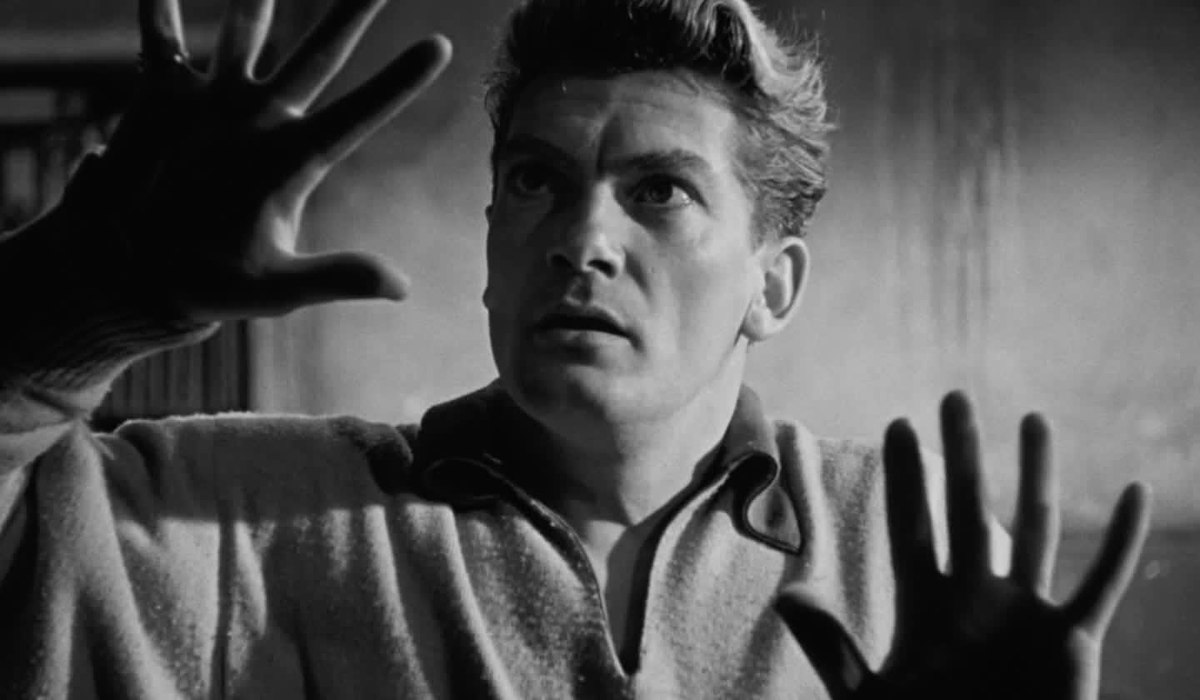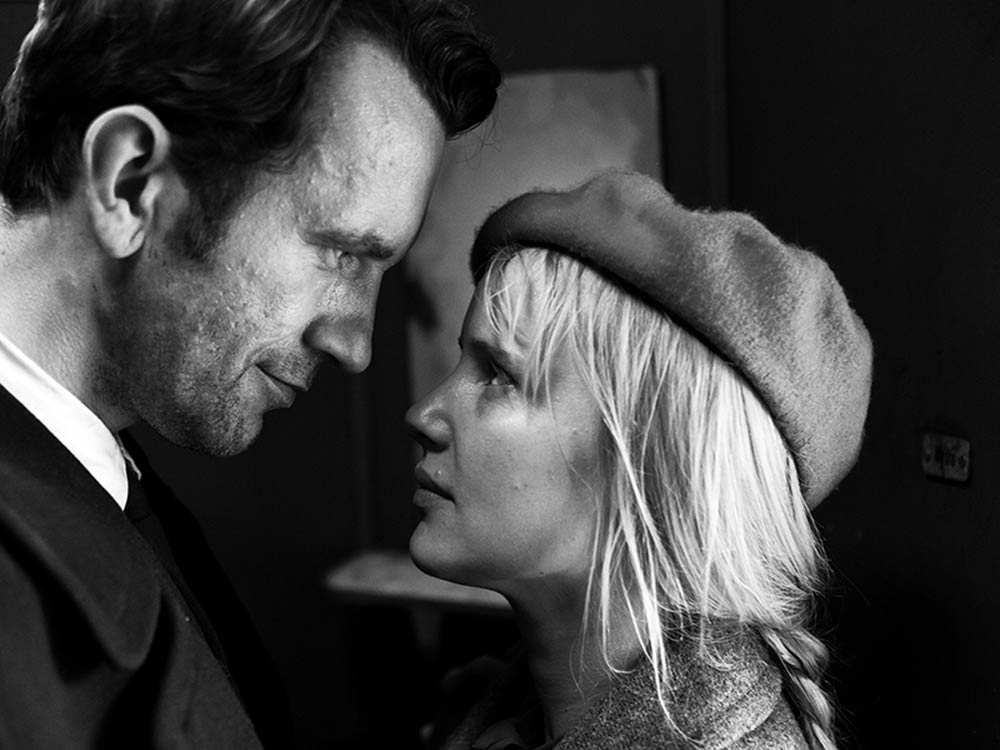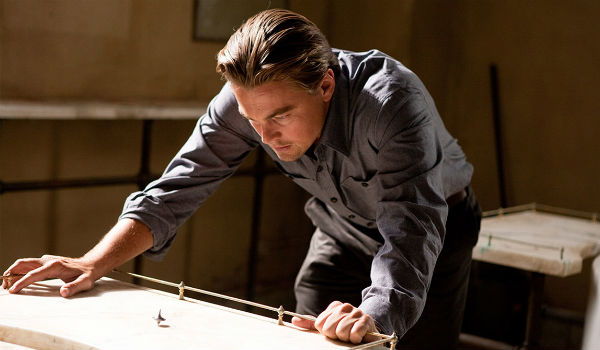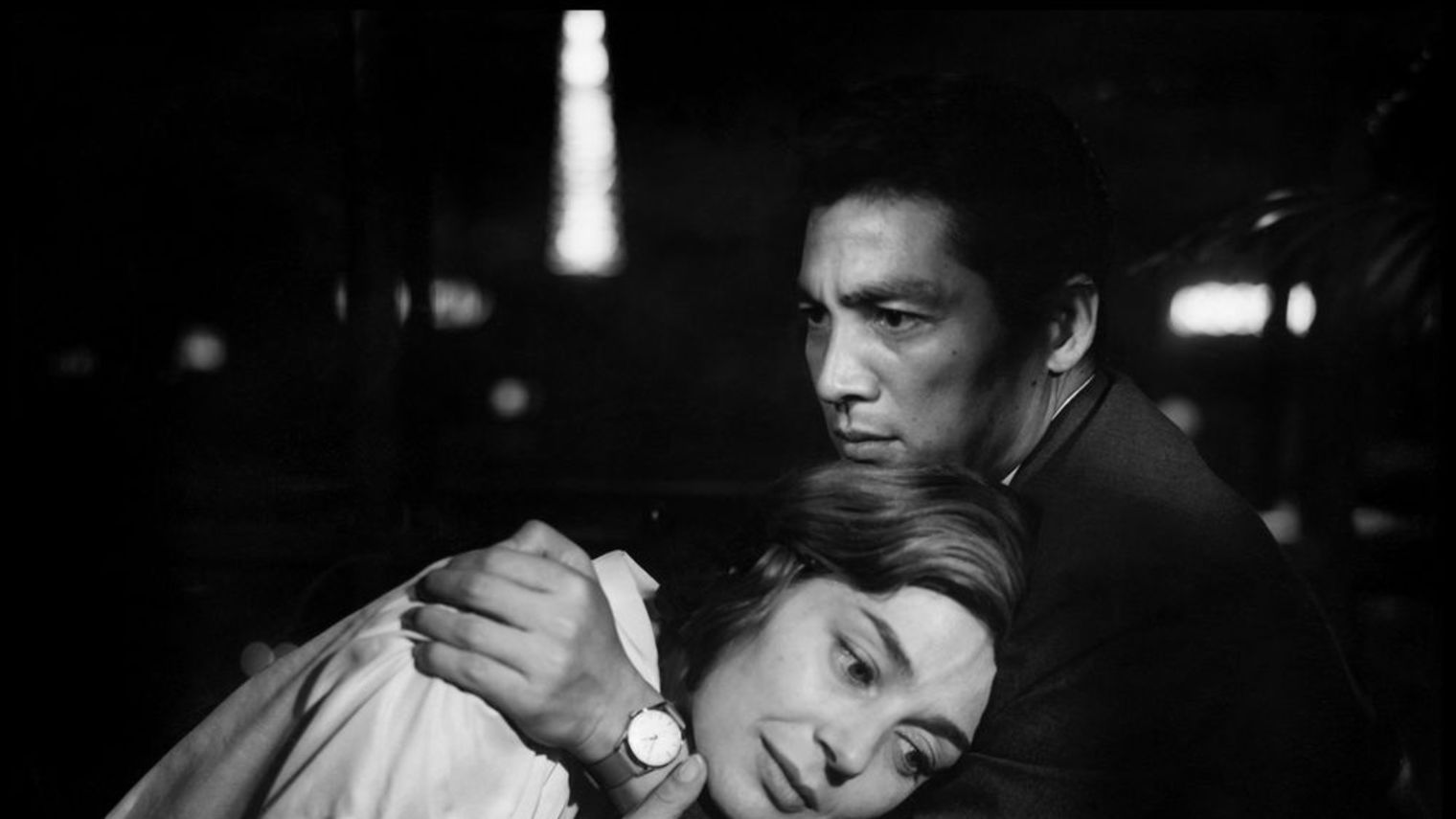5. Orpheus (1950)

Fifty years after the release of Cocteau’s second part of Orphic Trilogy and probably his most widely recognized work – “Orpheus”, Roger Ebert wrote: “Seeing “Orpheus” today is like glimpsing a cinematic realm that has passed completely from the scene. Films are rarely made for purely artistic reasons, experiments are discouraged, and stars as big as Marais are not cast in eccentric remakes of Greek myths.”
Indeed, unprecedented ingenuity of Orpheus can be spotted at glance as well as its unique, hypnotizing mise-en-scène which echoes the stylistics of German Expressionism. “Orpheus” is commonly perceived as Cocteau’s most linear movie, nevertheless its mysterious tone and widespread entanglement still place it far from one-dimensional interpretations.
As a result of a strange coincidence, the protagonist named Orpheus is abducted by the film femme-fatale, an elegant and sensual princess (Maria Casares). Surprisingly released, Orpheus returns home and spends hours sitting in the car and listening to a strange voice from the radio that transmits vague but seemingly harmless messages. Suddenly there is something that everyone previously familiar with the myth awaits – the death of Eurydice. Due to those circumstances Cocteau leads us directly to a moment when Orpheus has to go to the underworld to recover his wife. Despite Orpheus’ recent decline in interest in his beloved, the main character decides to visit Hades, nevertheless the viewer may get the impression that his decision is made upon the decency and the durability of the myth than for actual love.
As in other Cocteau’s works, different interpretative paths can be distinguished. One of them assumes that Orpheus is an evil poet whom the Princess sends into the abyss of stagnation and mediocrity. On the other hand there is a premise to believe that the film was composed of the dreams and visions of Orpheus, the great poet who sees the embodiment of death through the lens of his imagination. This view is supported by the author’s special, the motif of mirror. The same as in “The Blood of a Poet”, Cocteau provides the viewer with a difficult task that can not be solved. Are the events which take place in the film being seen while awake or is it just the protagonist’s dream? Probably Cocteau was the only person that could answer this question.
4. Cold War (2018)

Nominated in three Academy Awards categories, Paweł Pawlikowski’s “Cold War”, similarly to his previous Oscar-winning “Ida”, takes us on a journey through the past era in which Europe is divided by the Berlin Wall and his native Poland is a quasi puppet state entirely subordinated to Soviet regime. Despite its title, historical accuracy is not the most important part of “Cold War”. Pawlikowski obviously uses symbols understood in every corner of the world: the ruins of post-war Poland and the characters of party’s apparatchiks contrast with the dense atmosphere of smoky Parisian jazz clubs, yet the main storyline remains purely romantic. This tempting and picturesque vision of the past-world intricately created by Pawlikowski is nevertheless what stands in the way of fulfilling the love relationship between two main characters.
The action takes place over a dozen years and depicts a difficult relationship between Wiktor, a talented pianist working for the communist regime’s propaganda and Zula, a provincial girl of extraordinary beauty who seems to hide many secrets. Despite his artistic successes, Wiktor, to whom the security service attaches a reactionist tag, is under surveillance and encounters persecution that prompts him to escape his country. He will succeed only partially, because despite initial promises, his beloved woman would not dare to cross the border. This decision gives rise to a painful series of events due to which the protagonists will never experience the initial happiness that accompanied them at the very beginning.
After a few breakups and returns with Zula, the protagonist has to make the toughest decision in his life and eventually in the name of love returns to Poland where he falls directly into the arms of the regime secret police. In the end the couple manage to get together again, nevertheless the pain of existence in the crumbling world will make them decide to rescue only the myth.
3. Portrait of a Lady on Fire (2019)

Celine Sciamma’s so-far most recognized film has been praised above all for its amazing cinematography conveying the masterpieces of XVIII century romantic paintings and the outstanding acting performances of two young actresses Noémie Merlant and Adèle Haenel who managed to create a tense relationship which constitutes the central part of the movie. “Portrait of a Lady on Fire” is also an act of director’s courage and uncompromising nature in both narrative and stylistic features thanks to which Sciamma’s film can bring to one’s mind the works of such classics as Renoir or Cocteau. In addition, “Portrait of a Lady on Fire” also happens to be a very idiosyncratic transposition of the myth of Orpheus and Eurydice which, unlike most examples cited here, does not resound between the lines but is being directly quoted.
Sciamma’s picture is a love story about two young women whose characters are generally marked by the contrast of their personalities and the independence status they both represent. On the one hand, the painter, a self-sufficient lonely woman commonly respected in typically “male” profession (those days), on the other hand a liberated girl whose freedom has its expiration date due to upcoming marriage, being obviously planned against her will. Initially the story seems quite simple – the painter’s task is to create a portrait of a young girl, which will be delivered to her future husband. Such idea however does not appeal to the model herself so in turn she keeps setting off another painters who try to complete the portrait until the day the female painter shows up.
During a couple of days filled with sensual tension in which they explore each other’s emotionality and previously unknown sexuality, protagonists literally discuss the essential meaning of the myth of Orpheus and Eurydice. What they eventually manage to conclude is that actually Orpheus’ behavior was not as reckless as it is commonly perceived because his primary goal was to keep the memory of his beloved in the most idealized form. A form which unfortunately can never be sustained by reality. This is the moment we realize how genuinely Sciamma worked upon her parallel between the narrative plot and the original myth. Because as a matter of fact, isn’t it just a natural art’s attribute to encapsulate the essence of beauty and keep it everlasting in opposition to the beauty of all the living things which is always doomed to fade?
2. Inception (2010)

For many of you, seeing Nolan’s “Inception” in the following list may seem quite surprising. However, when we take a closer look at the way Nolan builds his imaginary universes, we can easily spot that they consist of many symbols and multilayered references to various elements of culture. When it comes to “Inception”, the association with the Greek mythology surely is not accidental because, in addition to the somewhat deeply hidden motif of Orpheus, the director refers also to the other classic legends, naming for instance the myth of Theseus thanks to which we owe the name of a character portrayed by Ellen Page – Ariadne.
This adventurous tale depicting the bandits of subconsciousness reveals Nolan’s boundless faith in the power of imagination as the key to cinematic immersion. In “Inception”, the director takes the viewer on a journey through the meanders of human subconsciousness where the sleep becomes undistinguishable from the reality. On this contrast between real world and dreamy projection, Nolan also builds the film’s main dramatic conflict. Why did the main character’s wife commit suicide? Where does our consciousness end? As usual, Nolan will not help us answer all the questions.
The only character who seems to know every rule of the game is Cobb, the main character portrayed by Leo DiCaprio. He is the one whose personal issues are placed at stake and has to struggle for the redemption in order to reclaim his family. To achieve this he will need to reshape the memories of the deceased wife that seem to haunt him relentlessly. Cobb will have to go down to the deepest levels of subconsciousness passing through the infernal circles, because his traumatic visions can be destroyed only in such symbolically marked place.
1. Hiroshima, mon amour (1959)

“Hiroshima, mon amour” tells the story of a French actress who comes to Japan and gets into a romantic relationship with a local architect. The story of love however, constitutes just a spark for the memories of a protagonist who gradually, remembering the events of the past, begins to familiarize the Japanese with the history hidden at the very bottom of her heart.
Rensais’ masterpiece is hence a depiction of overlapping events which metaphorically interweave protagonist’s past and present. This narrative strategy is highlighted for instance by the scene where the image of male hand shivering opens in heroine’s mind a fully-packed bundle of painful memories of her lost lover. This symptomatic evolution of protagonist’s thought is just one of many elements that constitute a very complex network of reminiscences that is being gradually depicted through the course of the story. The memory of a past time returns to her somehow after many years and is seemed to be unleashed by very strong and long-forgotten experience of love.
The circumstances and the setting obviously cannot be neglected because what “Hiroshima, mon amour” offers to us is that kind of a peculiar paradox – tragically lost love can be regained only in tragically marked place. In the classical story of Orpheus and Eurydice the protagonist steps down to Hades to regain his beloved. There is certainly no such place on earth which would convey the symbolics of the underworld more suggestively than Hiroshima.
While in the classical story Orpheus is being punished for turning back to see Eurydice, in “Hiroshima, mon amour” the protagonist’s burden seems to originate from the years of negligence and oblivion. The movie shows an image of a woman in despair who is able to look back into her past only while dreaming. Nonetheless, the protagonist will have to turn back to release herself from the past and make a fresh start. After many years of concealing and suppressing her feelings, she finally settles up with her past, yet still will not be able to stay in Hiroshima regardless of the romantic relationship she found there. Her lover represents therefore the same what Eurydice represented for Orpheus, a true love but also a profound tragedy at the same time.